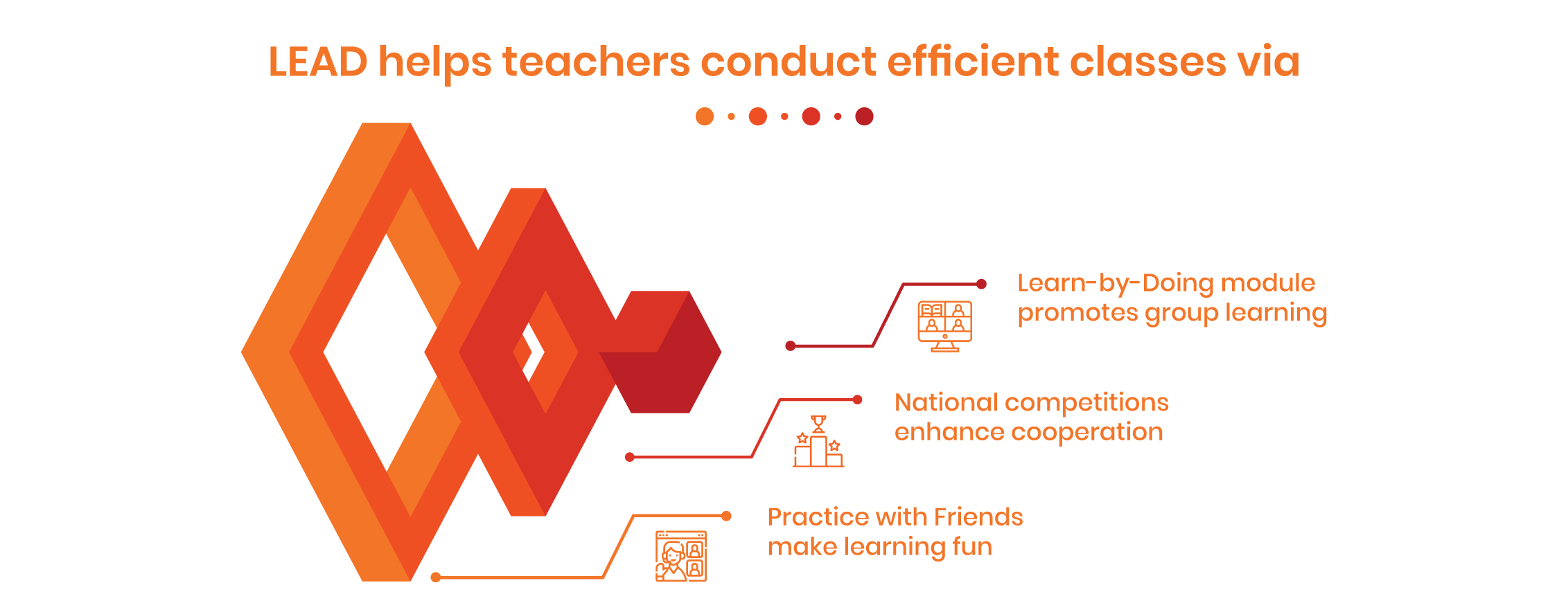How does online learning help students to collaborate better?

Give Your School The Lead Advantage
Collaborative learning in the classroom is easy and achievable. Group projects, workshops, etc., keep students busy and help them get trained in skills like empathy, higher-level thinking in students and boosts their confidence and self-esteem—one of the most important aspects of schooling. But, the pandemic changed this. Not only the pandemic disrupted the regular schooling of billions, but it created irreversible learning gaps too. “COVID-19 pandemic has been the worst shock to education systems in a century, with more than 1.6 billion children and youth not being able to attend school for months are still not back in school,” reports UNESCO.
The pandemic caused much harm to the various aspects of the school, including collaborative learning. Collaborative learning engaged learners to process and synthesise concepts and was an excellent substitute for rote memorisation of facts. In addition, collaborative learning in the classroom taught students to defend their positions, reframe ideas, listen to other viewpoints and convey their perspectives to gain a holistic understanding as a group than they could as individuals.
Collaborative learning in the classroom has ample benefits. To solve a given problem, children need to communicate, hear and learn from different opinions. Some of the advantages of collaborative learning are:
Learning from each other
Children have various ideologies and thoughts. When working on a project collaboratively, everyone learns to gain a newer and better perspective on things.
Trust Building
When students work together, they build trust and reach a common goal. This also enhances their emotional quotient and helps in the long term.
Interactive Classroom Environment
If a student learns only from textbooks, it leads to monotony and seldom helps with the skill enhancement. However, when a student works in a group, it leads to interactive learning, leading to better knowledge retention.
Gain confidence
Collaborative learning assists children with overcoming stage fear and increases their self-confidence and self-esteem. In addition, they learn to manage themselves and their group for a common goal.
However, when the schools shifted to remote setup, collaborative activities took a hit. Teachers were in flux to make it happen virtually. Fortunately, integrated solutions in schools can help schools carry on with their regular day-to-day tasks without hampering the students’ learning curve. This means collaborative learning can continue in the form of quizzes, competitions, workshops etc. Many say that nothing can replace traditional learning modules and the convenience it brings along. However, with technological advancements, redundancy must be left behind to embrace novelty. The benefits of online learning will go a long way, especially during the troubled world we all live in.
A report by UNESCO says, “Decisions made today in the context of COVID-19 will have long-term consequences for the futures of education. Policy-makers, educators and communities must make high-stakes choices today—these decisions should be guided by shared principles and visions of desirable collective futures.”
Schools at large must adopt technology to avoid any learning disruptions. Instead of considering ‘makeshift tactics, it must be deployed to bring efficiency and build a robust model.
How can LEAD help students with collaborative learning?
With the “Practice with Friends” feature in Student & Parent App, students can revise their curriculum in a fun way or practice with their friends from the comfort and safety of their homes. This proved to be a helpful feature for students who could not personally interact with their teachers or friends for revision. This has become a powerful tool to keep our users (students) meaningfully engaged and active via our consumer-facing apps. The benefits of online learning remain incalculable, and this has further been explored by LEAD.
LEAD also understands how every child is unique and demands different learning patterns, and that’s why it offers customised learning experiences based on their capability and intellect. For example, Digital Learning Content, Physical Reader & Workbooks, Learning activities, E-books, Regular assessments & Practices quizzes, Personalised revisions, Home practice, live classes from a LEAD expert teacher, Doubt clarification, and National competitions help students get quality learning while sitting at home.
LEAD is transforming schools by making children future-ready. To make yours a LEAD Powered School: Partner with us today


.png)
.png)
.png)
.png)
